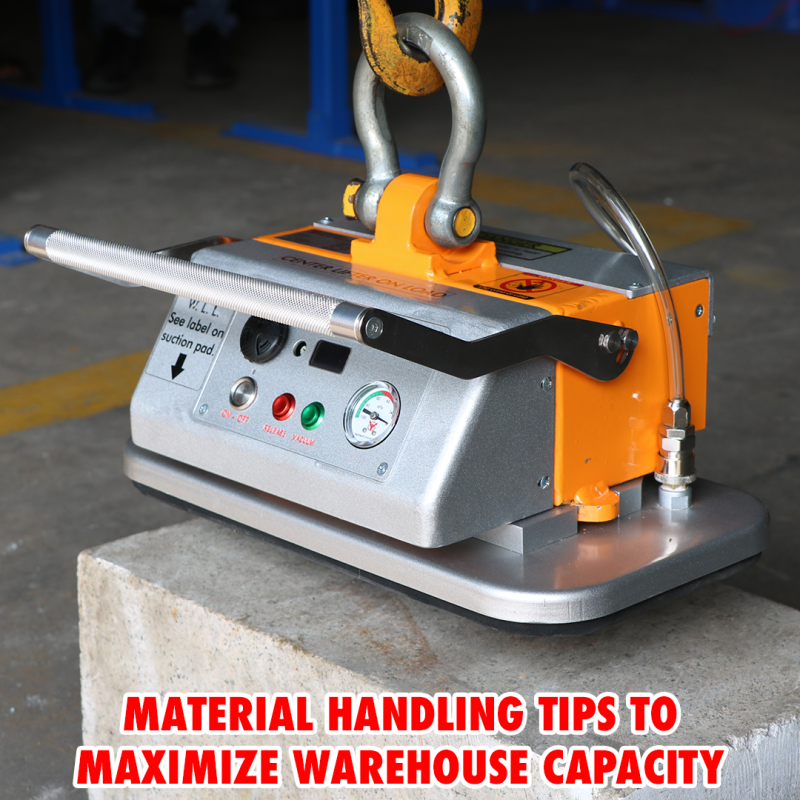



By optimizing the movement, storage, protection, and control of goods, you can dramatically increase throughput, reduce costs, and improve safety. This guide—packed with professional insights and best practices—offers actionable tips and expert recommendations for maximizing your warehouse capacity. Whether you’re a seasoned logistics manager or evaluating new equipment, these strategies will help you transform your facility into a lean, agile operation.
Material handling refers to the systematic movement, protection, storage, and control of materials throughout the entire supply chain—from receipt and storage through order picking, production, distribution, and disposal. To dive deeper into these core concepts, explore Understanding Material Handling Equipment. A clear grasp of these fundamentals ensures that every piece of material-handling equipment you deploy aligns with your operational goals.
Selecting the right lifting equipment reduces downtime, minimizes workplace injuries, and maximizes throughput. Discover Why should we select the appropriate handling equipment to learn how equipment compatibility, load profiles, and safety standards all contribute to a seamless workflow. When you match the correct tools—like forklifts, conveyors, and cranes—to specific tasks, you unlock your warehouse’s full potential.
Forklifts and pallet jacks are indispensable for indoor transport. Explore the various Categories of Material Handling to find options ranging from narrow-aisle reach trucks to heavy-duty counterbalance forklifts. For extended reach and deep-rack applications, consider Selecting the Forklift Boom, which converts your truck into a versatile high-reach handler.
AS/RS solutions—including cranes, shuttles, carousels, and vertical lift modules—offer high-density storage and rapid retrieval. Integrating these systems with your warehouse management software (WMS) ensures real-time inventory control and order accuracy, essential for peak utilization of floor space.
Complement automation with ergonomic aids such as scissor lifts, tilter tables, and mobile workstations. These devices reduce repetitive strain and accelerate cycle times on the packing floor.
Robust support structures are the backbone of any lifting operation. Aardwolf Transport Frames simplify complex processes by distributing heavy loads evenly across forklift tines and conveyors. Their modular design allows you to stack frames tightly, reclaiming valuable aisle space and reducing forklift travel cycles.
Handling bulky stone slabs without damaging material or straining operators is challenging. The vertical lifting of heavy stone slabs is made effortless with specialized roller-equipped clamps that position slabs horizontally for safer transport and storage, boosting throughput in stone fabrication warehouses.
Scissor lifters elevate heavy loads to ergonomic heights. Review the Features of the Aardwolf Scissor Clamp to see how hydraulic actuation, adjustable platforms, and load-locking arms streamline material staging—and eliminate manual bending and lifting entirely.
Whether you need span coverage or point-load precision, overhead cranes, gantry cranes, and jib cranes play a pivotal role in large-scale lifting. Compare types of cranes to choose between fixed‐bridge, semi‐gantry, or portable gantry designs—each optimized for specific gantry crane material handling scenarios.
For targeted lifts at workstations or dock areas, Positioning the jib crane arm solutions offers guidance on mount configurations, load charts, and swing limits. Proper alignment ensures precise load placement and maximizes usable floor space beneath the boom.
Fragile panels—glass, metal sheets, or composite slabs—benefit from contactless handling. Discover Why Choose the Aardwolf AVLP4-1000 Vacuum Lifter for its dual-circuit safety, customizable pad patterns, and remote controls. Integrating vacuum lifters reduces breakage rates and accelerates cycle times.
When moving heavy blocks, horizontal clamp attachments maintain stability at a precise lean angle. Learn more about the Stone Lifting Clamp and how its spring-loaded jaws and torque-limiting design improve efficiency with minimal operator intervention. For broader context, review how block lifting clamps improve efficiency in high-volume stone yards.
Glass sheets demand specialized grippers and vacuum lifters. Our lifting for glass solutions combine multi-pad suction technology with tilt functions—allowing single operators to handle heavy panes safely and securely.
Once lifted, every load must be restrained. Use durable Tie down straps with edge-protectors to secure pallets, frames, and crates. Proper tensioning prevents load shifts on conveyors, trucks, and during crane transfers.
Sustainable practices reduce your carbon footprint and lower operating costs. If you’re looking for eco-friendly solutions in stone transport, adopt reusable frames, optimize routing algorithms, and deploy electric lift trucks to cut emissions and noise.
For end-to-end workflow optimization, integrate smart conveyance and shuttle systems. Explore Features better transport tools to see how automated trolleys, AGVs, and conveyor loops coordinate load movements—freeing operators for higher-value tasks.
Ergonomic strategies—like work-height benches, scissor lifters, and pick-to-light systems—reduce strain and speed up picking rates. Aisle layouts should balance narrow-aisle density with safe turning radii. Perform regular time-motion studies to fine-tune rack configurations and minimize travel paths.
No piece of material handling equipment can outperform a well-trained operator. Establish comprehensive SOPs covering pre-shift inspections, load-rating verifications, and emergency procedures. Reinforce these protocols with daily toolbox talks and periodic refresher courses, ensuring compliance with industry safety standards.
Schedule routine inspections for conveyors, cranes, lifters, and forklifts. Use IoT sensors to monitor bearing temperatures, belt tensions, and hydraulic pressures—enabling predictive maintenance and avoiding costly downtime.
Maximizing warehouse capacity hinges on the strategic deployment of advanced material handling solutions and the continuous refinement of processes. By leveraging robust equipment—such as Aardwolf Transport Frames, scissor lifters, vacuum lifters, and specialized clamps—and adhering to material handling industry best practices, you’ll unlock substantial gains in throughput, safety, and cost efficiency. Embrace these tips to elevate your facility’s performance and secure a competitive edge in the evolving world of logistics and warehousing.
Sign up to receive the latest info on new Aardwolf products, special offers and more.
By signing up you agree to receive emails from Aardwolf with news, special offers, promotions and other information. You can unsubscribe at any time.